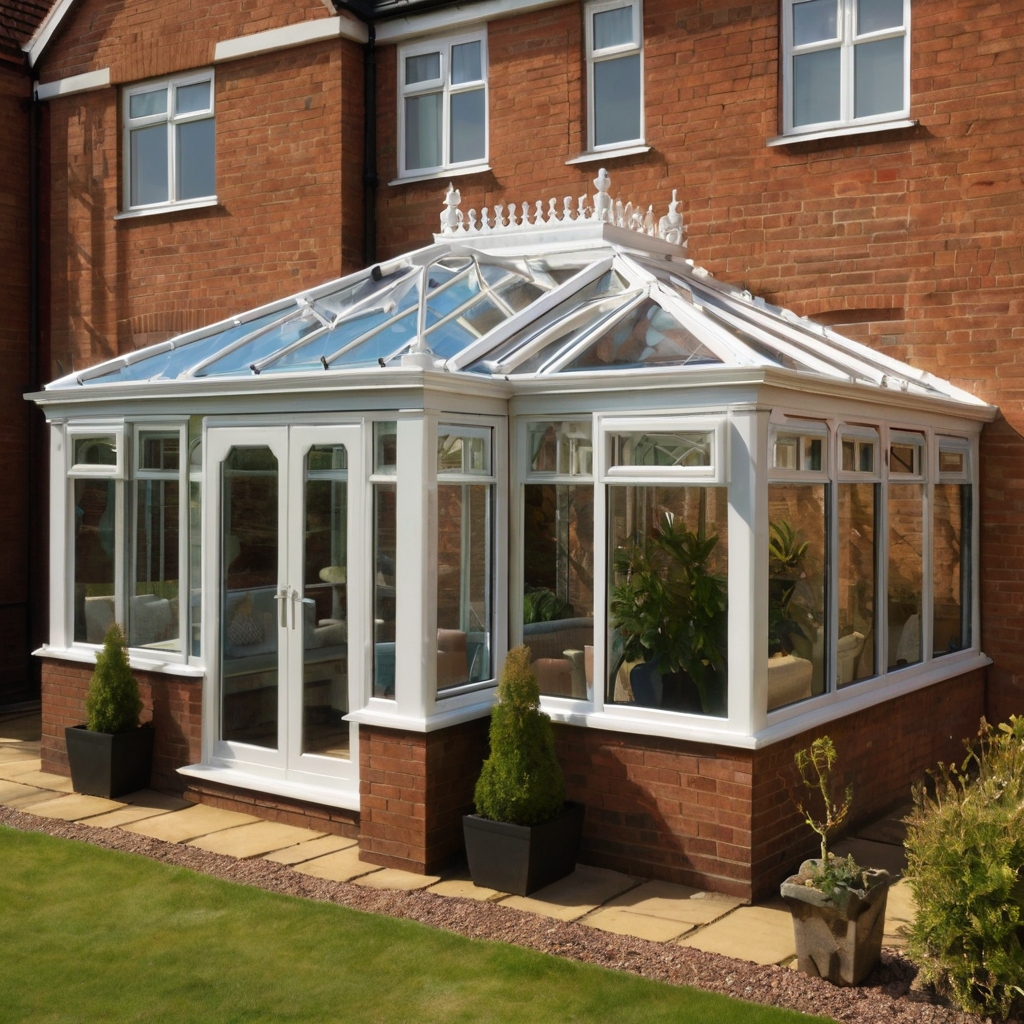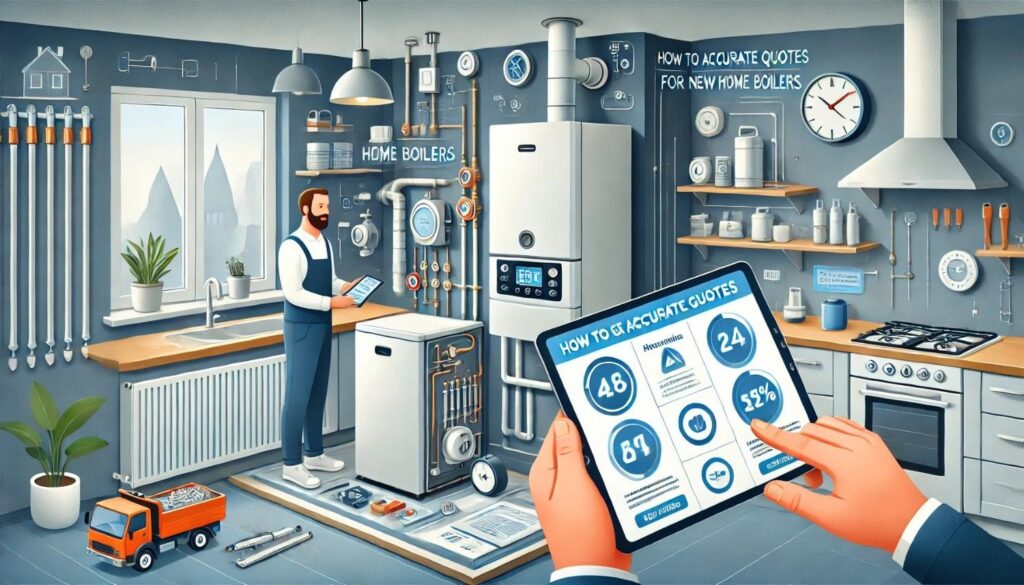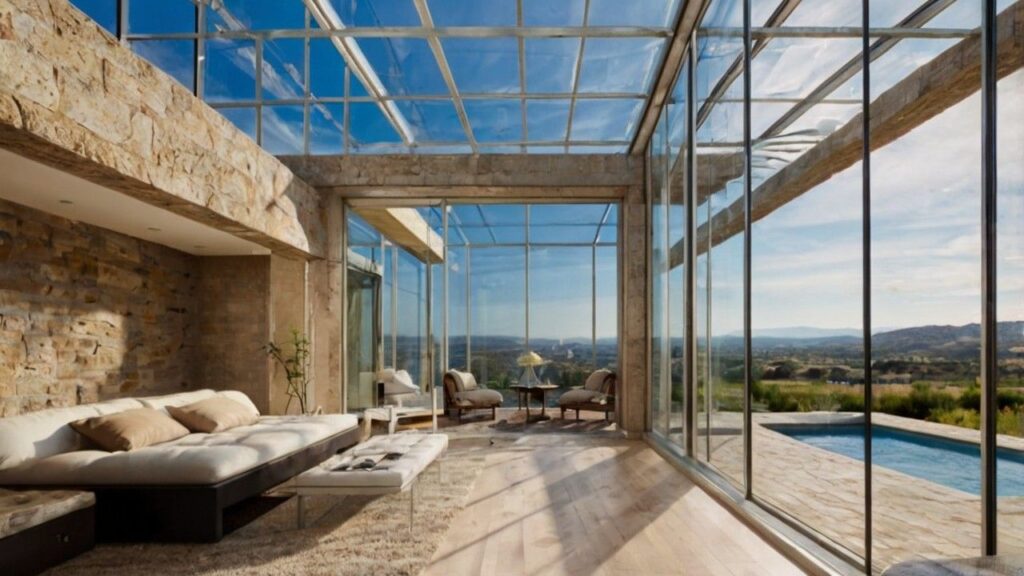Home Improvements Ideas for 2024
Discover 12 budget-friendly home improvements ideas that can instantly increase your UK property value. Learn how to maximize your investment with cost-effective upgrades and renovations.
In today’s competitive UK housing market, homeowners are constantly seeking ways to increase their property’s value without breaking the bank. Whether you’re planning to sell or simply want to enhance your living space, budget-friendly home improvements can make a significant impact. This comprehensive guide will explore 12 cost-effective upgrades that can instantly boost your home’s value.
These upgrades are sorted from the lowest budget ideas to more substantial investments. We’ll also provide insights into the potential value increase each improvement can bring to your UK property.
home Improvements Ideas from budget to Luxury?
The average cost of home improvements in the UK ranges from £500 to over £50,000. Prices can vary significantly based on factors such as the size of your house, style, materials, and location. For instance, budget options like fresh paint can start from as little as £500. Meanwhile, luxury home improvements, such as adding a modern orangery, can exceed £50,000.
The average cost of home improvements in the UK ranges from £500 to over £50,000. Prices can vary significantly based on factors such as the size of your house, style, materials, and location. For instance, budget options like fresh paint can start from as little as £500. Meanwhile, luxury home improvements, such as adding a modern orangery, can exceed £50,000.
The average cost of home improvements in the UK ranges from £500 to over £50,000. Prices can vary significantly based on factors such as the size of your house, style, materials, and location. For instance, budget options like fresh paint can start from as little as £500. Meanwhile, luxury home improvements, such as adding a modern orangery, can exceed £50,000.
1. Fresh Paint (Budget: £100 – £500)
One of the most affordable yet impactful improvements you can make is giving your home a fresh coat of paint. A well-chosen color scheme can transform the look and feel of your space, making it more appealing to potential buyers or simply more enjoyable for you to live in.
How to do it: Choose neutral colors for broad appeal, Focus on high-traffic areas and rooms that need a refresh. Don’t forget the ceiling for a complete makeover. Potential value increase: 1-2%
2. Declutter and Deep Clean (Budget: £0 – £200)
A clutter-free, spotless home instantly appears more spacious and well-maintained. This simple yet effective improvement costs little more than your time and effort.
How to do it: Organize closets, cabinets, and storage areas. Remove personal items and excess furniture
Hire a professional cleaning service for a thorough deep clean. Potential value increase: 3-5%
3. Improve Curb Appeal (Budget: £200 – £500)
First impressions matter, and enhancing your home’s curb appeal can significantly impact its perceived value.
How to do it: Tidy up the garden and mow the lawn. Plant colorful flowers or add potted plants. Paint the front door and update hardware. Clean or replace the house number and mailbox. Potential value increase: 5-10%
4. Update Light Fixtures (Budget: £100 – £500)
Outdated light fixtures can make your home feel old and neglected. Replacing them with modern, energy-efficient options can brighten up your space and appeal to energy-conscious buyers.
How to do it: Replace old ceiling lights and lampshades. Install dimmer switches for added ambiance. Consider LED options for energy efficiency. Potential value increase: 1-3%
5. Refresh Kitchen Cabinets (Budget: £200 – £800)
A full kitchen renovation can be costly, but refreshing your cabinets can give your kitchen a new lease on life without the hefty price tag.
How to do it: Paint or stain existing cabinets. Replace outdated hardware with modern options. Add under-cabinet lighting for a high-end touch. Potential value increase: 3-7%
6. Update Bathroom Fixtures (Budget: £300 – £1,000)
Bathrooms are a key selling point for any home. Updating fixtures can give your bathroom a fresh, modern look without a complete overhaul.
How to do it: Replace old taps, showerheads, and toilet seats. Install a new vanity or update the existing one. Add a frameless glass shower screen. Potential value increase: 2-4%
7. Improve Energy Efficiency (Budget: £500 – £2,000)
With rising energy costs in the UK, improvements that increase energy efficiency are highly valued by potential buyers.
How to do it: Install a smart thermostat. Add insulation to the loft or walls. Replace old windows with double-glazed options. Potential value increase: 5-10%
8. Create Additional Storage (Budget: £500 – £2,000)
Storage is always at a premium in UK homes. Adding clever storage solutions can make your property more attractive to buyers.
How to do it: Install built-in wardrobes or shelving units. Utilize under-stair space for storage or a small office. Add a garden shed for outdoor storage. Potential value increase: 3-5%
9. Upgrade Flooring (Budget: £1,000 – £3,000)
Quality flooring can dramatically improve the look and feel of your home. While it’s a larger investment, it can significantly increase your property’s value.
How to do it: Replace worn carpets with hardwood or high-quality laminate. Install luxury vinyl tiles in kitchens and bathrooms. Refinish existing hardwood floors. Potential value increase: 3-5%
10. Add a Conservatory, Orangery or Sunroom (Budget: £5,000 – £15,000)
While more expensive, adding a conservatory, orangery or sunroom can significantly increase your living space and appeal to potential buyers.
How to do it: Choose a design that complements your home’s architecture. Ensure proper insulation for year-round use. Consider planning permission requirements. Potential value increase: 5-10%
10. Convert the Loft (Budget: £15,000 – £40,000)
A loft conversion is a more substantial investment but can add significant value by creating an additional bedroom or living space.
How to do it: Assess the feasibility of your loft for conversion. Obtain necessary planning permissions. Work with a reputable contractor for the conversion. Potential value increase: 10-20%
Remember, while these options may be easier to install, it’s crucial not to compromise on quality for the sake of convenience.
11. Convert the Loft (Budget: £15,000 – £40,000)
A loft conversion is a more substantial investment but can add significant value by creating an additional bedroom or living space.
How to do it: Assess the feasibility of your loft for conversion. Obtain necessary planning permissions. Work with a reputable contractor for the conversion. Potential value increase: 10-20%
12. Install a New Kitchen (Budget: £8,000 – £20,000)
While the most expensive option on our list, a new kitchen can dramatically increase your home’s value and appeal to potential buyers.
How to do it: Choose a timeless design that appeals to a broad range of tastes. Opt for quality appliances and worktops. Consider an open-plan layout if possible. Potential value increase: 5-15%
Choosing the Most Experienced Fitter: Ensuring Quality Installation
- Check Credentials: Look for memberships in professional bodies such as the Glass and Glazing Federation (GGF) or the Fenestration Self-Assessment Scheme (FENSA).
- Read Reviews: Check online reviews and testimonials from previous customers. Platforms like Trustpilot or Checkatrade can be valuable resources.
- Ask for References: Don’t hesitate to ask potential fitters for references from recent clients.
- Experience Matters: Inquire about how long the company has been in business and how many conservatories they’ve installed.
- Visit Showrooms: If possible, visit the company’s showroom to see examples of their work and discuss your project in person.
- Get Multiple Quotes: Obtain quotes from at least three different fitters to compare prices and services.
- Examine Warranties: A reputable fitter should offer comprehensive warranties on both materials and workmanship.
Essential Certifications and Accreditations for UK Conservatory Installers
To ensure you’re working with a qualified and trustworthy conservatory installer, look for the following certifications and accreditations:
FENSA: (Fenestration Self-Assessment Scheme) FENSA ensures that companies comply with building regulations and energy efficiency standards. All FENSA-registered companies are regularly assessed to maintain high standards.
GGF: (Glass and Glazing Federation) GGF members adhere to a strict code of practice and offer consumer protection through their insurance-backed guarantee scheme.
DGCOS: (Double Glazing & Conservatory Quality Assurance Scheme) This government-authorized scheme offers comprehensive consumer protection and dispute resolution services.
TrustMark: A government-endorsed quality scheme covering a wide range of trades, including conservatory installation.
Which? Trusted Traders An endorsement scheme run by consumer champion Which?, assessing and approving businesses based on customer satisfaction and business practices.
BBA: (British Board of Agrément) The BBA certifies construction products and installers, ensuring they meet rigorous UK standards.
MTC: (Minimum Technical Competencies) Installers should have MTC cards demonstrating their competence in specific areas of conservatory installation.
Always ask potential installers about their certifications and don’t hesitate to verify their claims with the relevant organizations.
Ben Edwards
Think Long-Term
Check if your local council or community organizations offer any resources or programs for home improvements. Some areas have initiatives to support energy-efficient upgrades or heritage property maintenance.
Consider the long-term impact of your improvements. Will they still add value in 5 or 10 years? Opt for timeless designs and durable materials that will stand the test of time.



Making Your Improvements Cost-Effective: Tips and Tricks
While the improvements we’ve discussed can add significant value to your home, it’s crucial to approach them strategically to maximize your return on investment. Here are some tips and tricks to make your home improvements more cost-effective:
Prioritize High-Impact, Low-Cost Improvements: Start with improvements that offer the biggest bang for your buck. Deep cleaning, decluttering, and fresh paint are excellent starting points that can dramatically improve your home’s appeal at a minimal cost.
DIY Where Possible
Many of the improvements we’ve discussed, such as painting, decluttering, and basic landscaping, can be DIY projects. By doing the work yourself, you can save significantly on labour costs. However, know your limits – leave complex or potentially dangerous tasks to professionals.
Shop Smart for Materials
Look for sales, discount stores, and even second-hand options for materials. Many home improvement stores offer significant discounts on slightly damaged goods or end-of-line products that are perfectly usable.
Upcycle and Repurpose
Instead of buying new, consider upcycling or repurposing existing items. For example, you could repaint and update hardware on existing kitchen cabinets instead of replacing them entirely.
Focus on Energy Efficiency
Energy-efficient improvements not only add value to your home but can also lead to significant savings on your energy bills. Look for energy-efficient appliances, LED lighting, and improved insulation.
Plan and Budget Carefully
Before starting any project, create a detailed plan and budget. Include a contingency fund for unexpected expenses. This helps prevent overspending and ensures you’re focusing on improvements that offer the best value for money.
Get Multiple Quotes
For larger projects that require professional help, always get multiple quotes. This can help you understand the fair market rate for the work and potentially negotiate better prices.
Consider Timing
Certain home improvement projects may be cheaper during off-peak seasons. For example, installing a new heating system might be less expensive in summer when demand is lower.
Invest in Quality Where It Matters
While it’s important to save where you can, don’t cut corners on quality for important features. Investing in high-quality materials for things like flooring or kitchen worktops can pay off in the long run.
CONCLUSION: If you’re planning multiple improvements, see if you can bundle them together. Contractors might offer better rates for larger projects. You can save on things like skip hire or equipment rental by doing multiple tasks at once.
Remember, the goal is to maximise the return on your investment while creating a more enjoyable living space for you and your family.
CONCLUSION: If you’re planning multiple improvements, see if you can bundle them together. Contractors might offer better rates for larger projects. You can save on things like skip hire or equipment rental by doing multiple tasks at once.
Remember, the goal is to maximise the return on your investment while creating a more enjoyable living space for you and your family.
CONCLUSION: If you’re planning multiple improvements, see if you can bundle them together. Contractors might offer better rates for larger projects. You can save on things like skip hire or equipment rental by doing multiple tasks at once.
Remember, the goal is to maximise the return on your investment while creating a more enjoyable living space for you and your family.
Which home improvement offers the best value for money in the UK?
Generally, improving energy efficiency offers excellent value for money in the UK. Upgrades like adding insulation to conservatory roof, installing a smart thermostat, or replacing old windows with double-glazed options can increase your home’s value by 5-10% while also reducing energy bills.
Do I need planning permission for all these improvements?
Most of the improvements listed don’t require planning permission, as they fall under “permitted development.” However, larger projects like loft conversions or conservatories may require planning permission depending on your location and the specifics of the project. Always check with your local council before starting any significant work.
How much can decluttering and deep cleaning really impact my home’s value?
While it might seem simple, decluttering and deep cleaning can increase your home’s value by 3-5%. A clean, organized home appears more spacious and well-maintained, which is highly attractive to potential buyers.
Is it worth investing in a new kitchen if I’m planning to sell soon?
If your current kitchen is significantly outdated, investing in a new one can be worthwhile. A new kitchen conservatory can increase your home’s value by 5-15%. However, if you’re planning to sell very soon, consider less expensive updates like repainting cabinets or updating hardware instead.
How can I finance these home improvements?
There are several ways to finance home improvements in the UK, including:
Using savings
Taking out a personal loan
Remortgaging your property
Using a credit card (for smaller improvements)
Applying for a home improvement grant (available for certain energy-efficient upgrades)
Always consider the cost of financing against the potential value increase when deciding how to fund your improvements.
Which home improvement offers the best value for money in the UK?
Generally, improving energy efficiency offers excellent value for money in the UK. Upgrades like adding insulation to conservatory roof, installing a smart thermostat, or replacing old windows with double-glazed options can increase your home’s value by 5-10% while also reducing energy bills.
Do I need planning permission for all these improvements?
Most of the improvements listed don’t require planning permission, as they fall under “permitted development.” However, larger projects like loft conversions or conservatories may require planning permission depending on your location and the specifics of the project. Always check with your local council before starting any significant work.
How much can decluttering and deep cleaning really impact my home’s value?
While it might seem simple, decluttering and deep cleaning can increase your home’s value by 3-5%. A clean, organized home appears more spacious and well-maintained, which is highly attractive to potential buyers.
Is it worth investing in a new kitchen if I’m planning to sell soon?
If your current kitchen is significantly outdated, investing in a new one can be worthwhile. A new kitchen conservatory can increase your home’s value by 5-15%. However, if you’re planning to sell very soon, consider less expensive updates like repainting cabinets or updating hardware instead.
How can I finance these home improvements?
There are several ways to finance home improvements in the UK, including:
Using savings
Taking out a personal loan
Remortgaging your property
Using a credit card (for smaller improvements)
Applying for a home improvement grant (available for certain energy-efficient upgrades)
Always consider the cost of financing against the potential value increase when deciding how to fund your improvements.
Which home improvement offers the best value for money in the UK?
Generally, improving energy efficiency offers excellent value for money in the UK. Upgrades like adding insulation to conservatory roof, installing a smart thermostat, or replacing old windows with double-glazed options can increase your home’s value by 5-10% while also reducing energy bills.
Do I need planning permission for all these improvements?
Most of the improvements listed don’t require planning permission, as they fall under “permitted development.” However, larger projects like loft conversions or conservatories may require planning permission depending on your location and the specifics of the project. Always check with your local council before starting any significant work.
How much can decluttering and deep cleaning really impact my home’s value?
While it might seem simple, decluttering and deep cleaning can increase your home’s value by 3-5%. A clean, organized home appears more spacious and well-maintained, which is highly attractive to potential buyers.
Is it worth investing in a new kitchen if I’m planning to sell soon?
If your current kitchen is significantly outdated, investing in a new one can be worthwhile. A new kitchen conservatory can increase your home’s value by 5-15%. However, if you’re planning to sell very soon, consider less expensive updates like repainting cabinets or updating hardware instead.
How can I finance these home improvements?
There are several ways to finance home improvements in the UK, including:
Using savings
Taking out a personal loan
Remortgaging your property
Using a credit card (for smaller improvements)
Applying for a home improvement grant (available for certain energy-efficient upgrades)
Always consider the cost of financing against the potential value increase when deciding how to fund your improvements.
UK-Based Support Team
Our knowledgeable, UK-based support team is familiar with local markets, regulations, and trends, so you’ll always get relevant and current advice.
Simply Fill in Your Details, and Receive Competitive Quotes from Accredited Companies Tailored to Your Project!
Our team brings almost two decades of expertise in the UK home improvements sector, giving you unique insights into its challenges and possibilities. Reaching out to us means tapping into a wealth of experience from home improvements experts who know the British market inside out.
All our suppliers are members of one or more consumer protection groups below.

We offer unparalleled market insights, a network of skilled professionals vetted, accredited and reference – credit checked who can handle projects of all sizes. Our knowledgeable UK-based team will ensure a smooth, informed experience from start to finish.
To send us your marketing and other service offers, please use the following email: offers@comparison.market

















